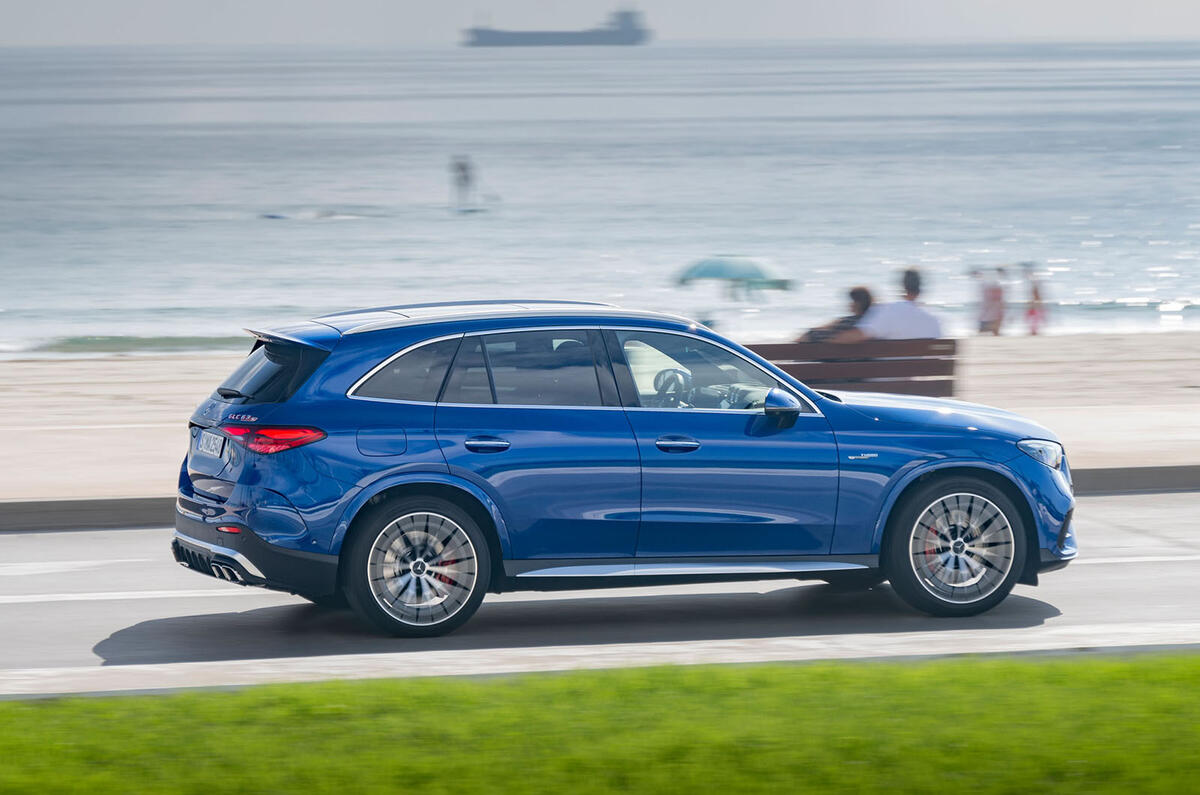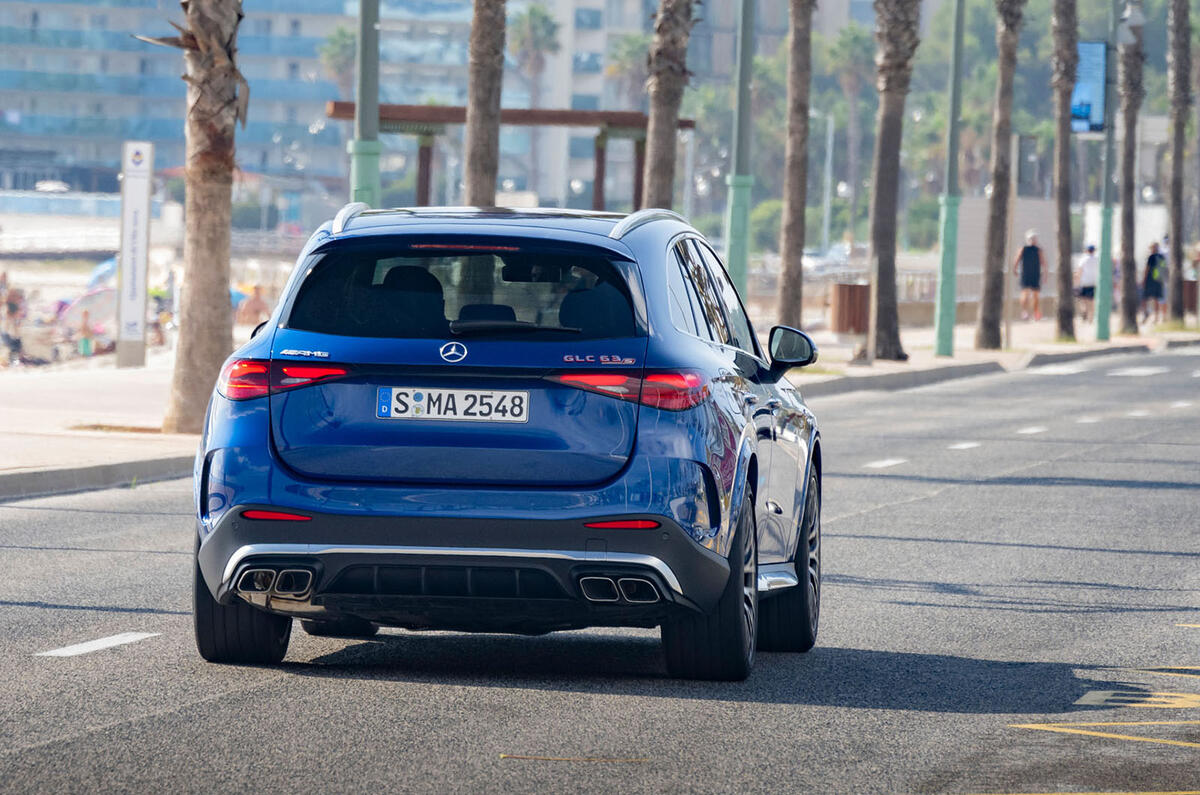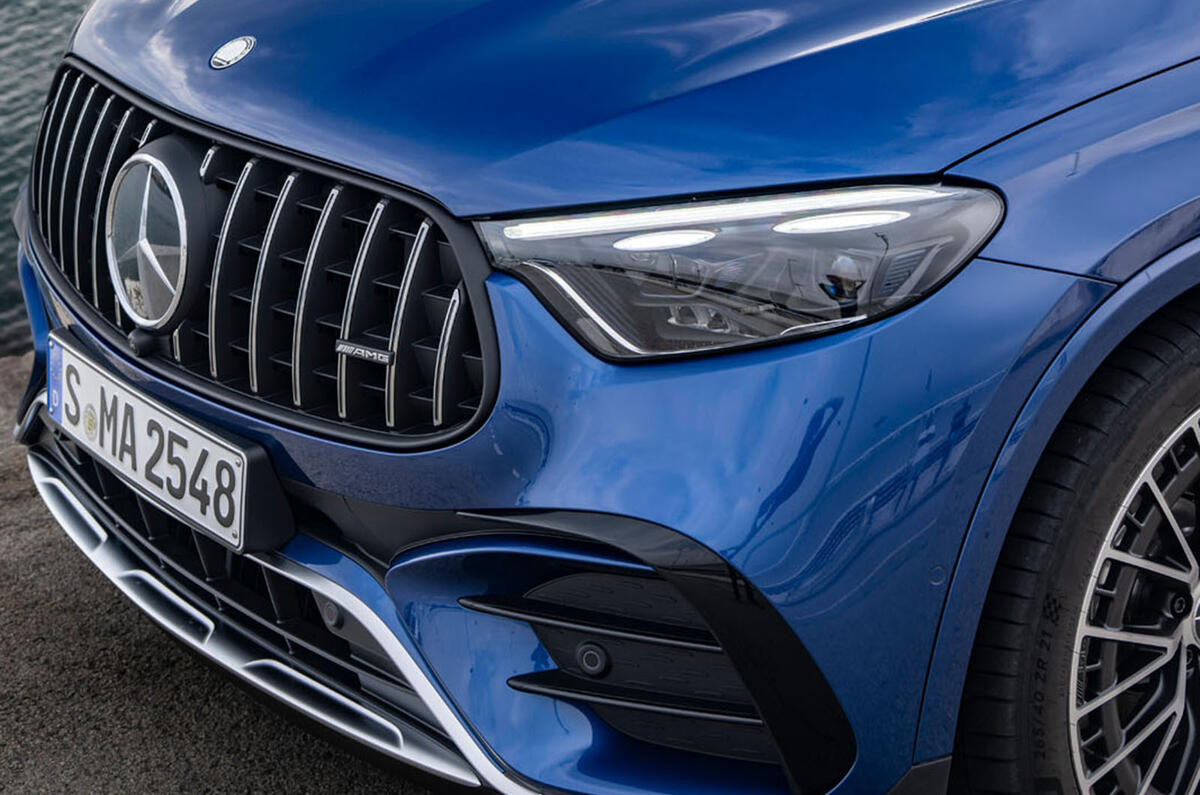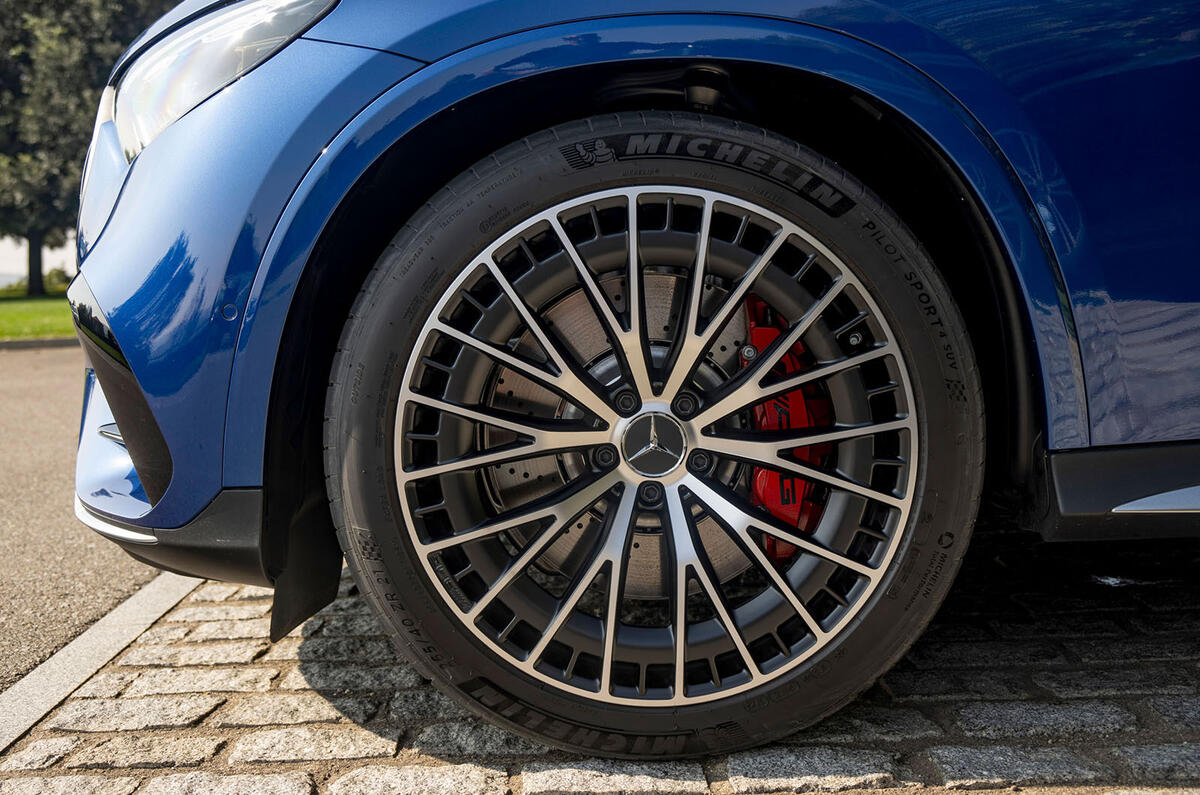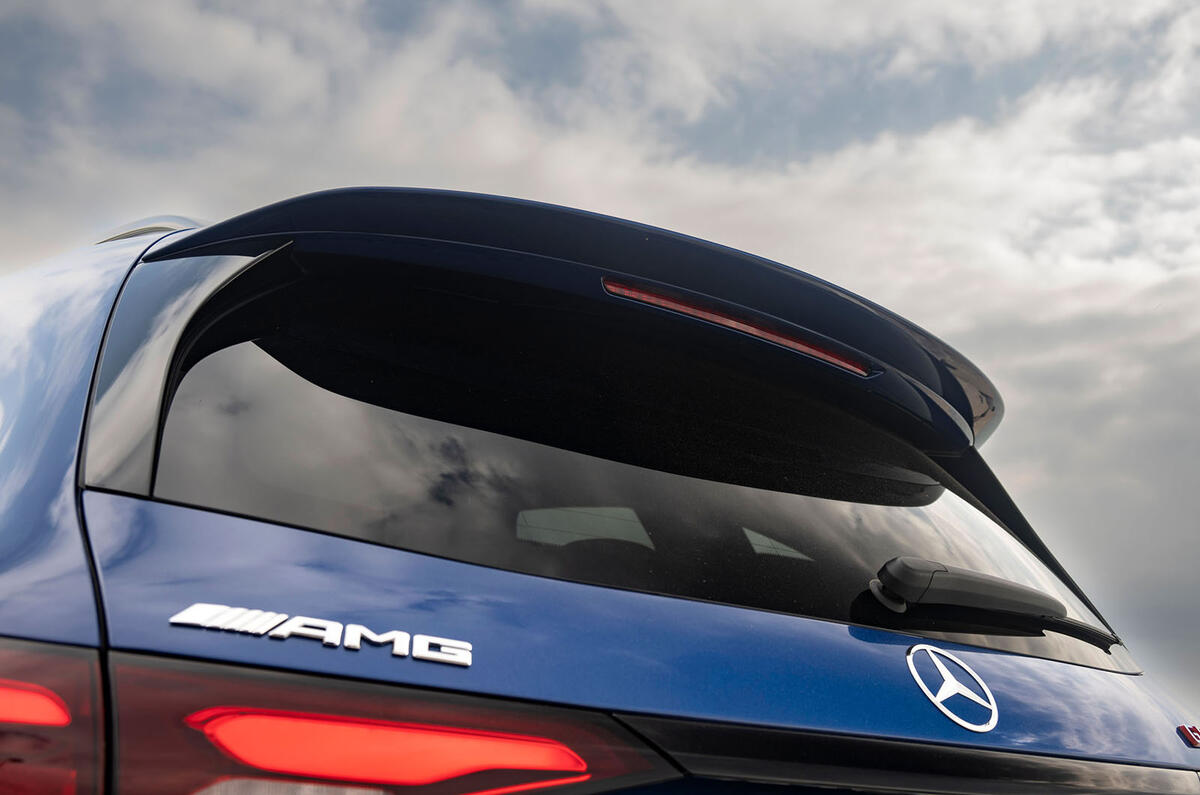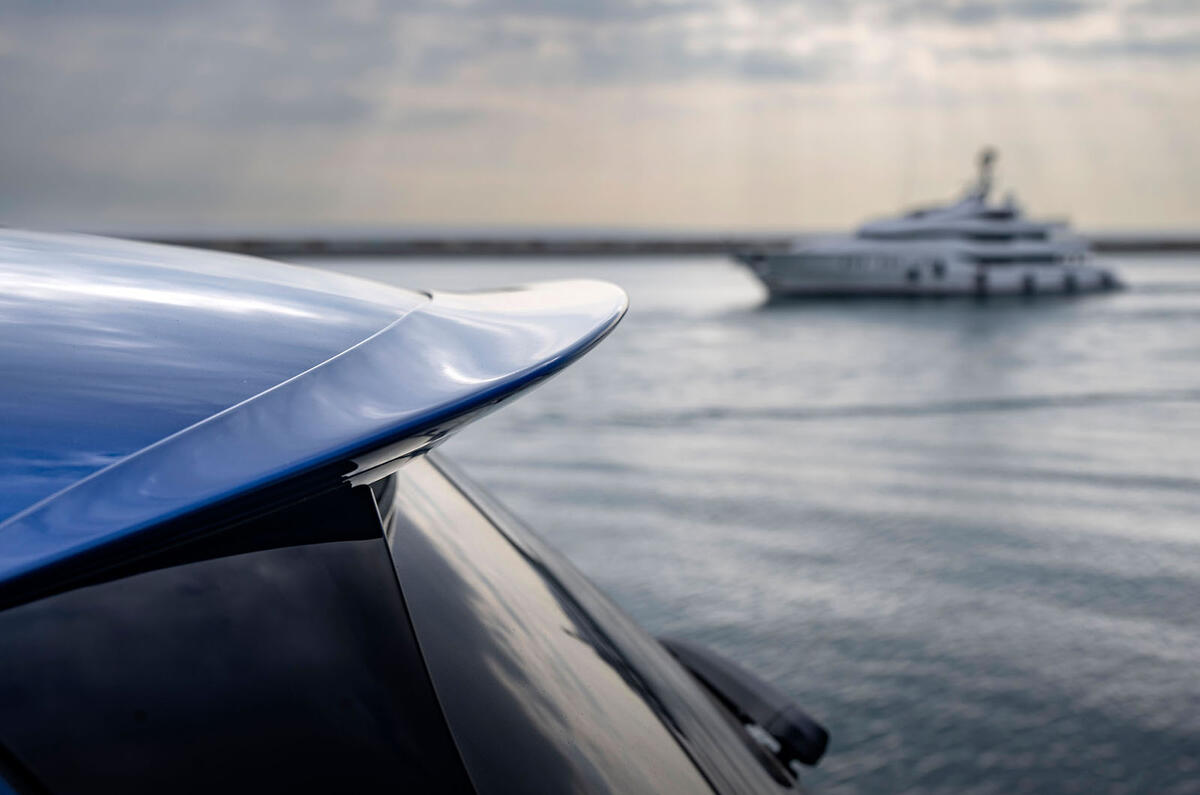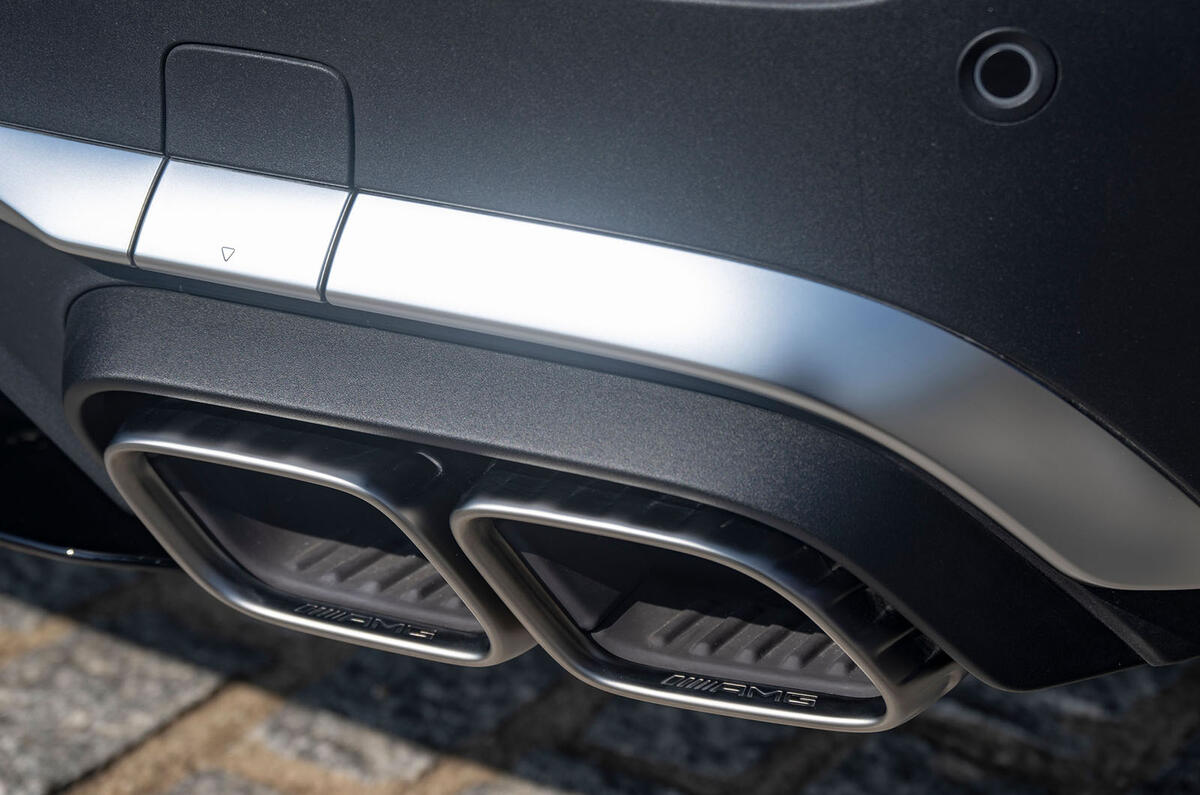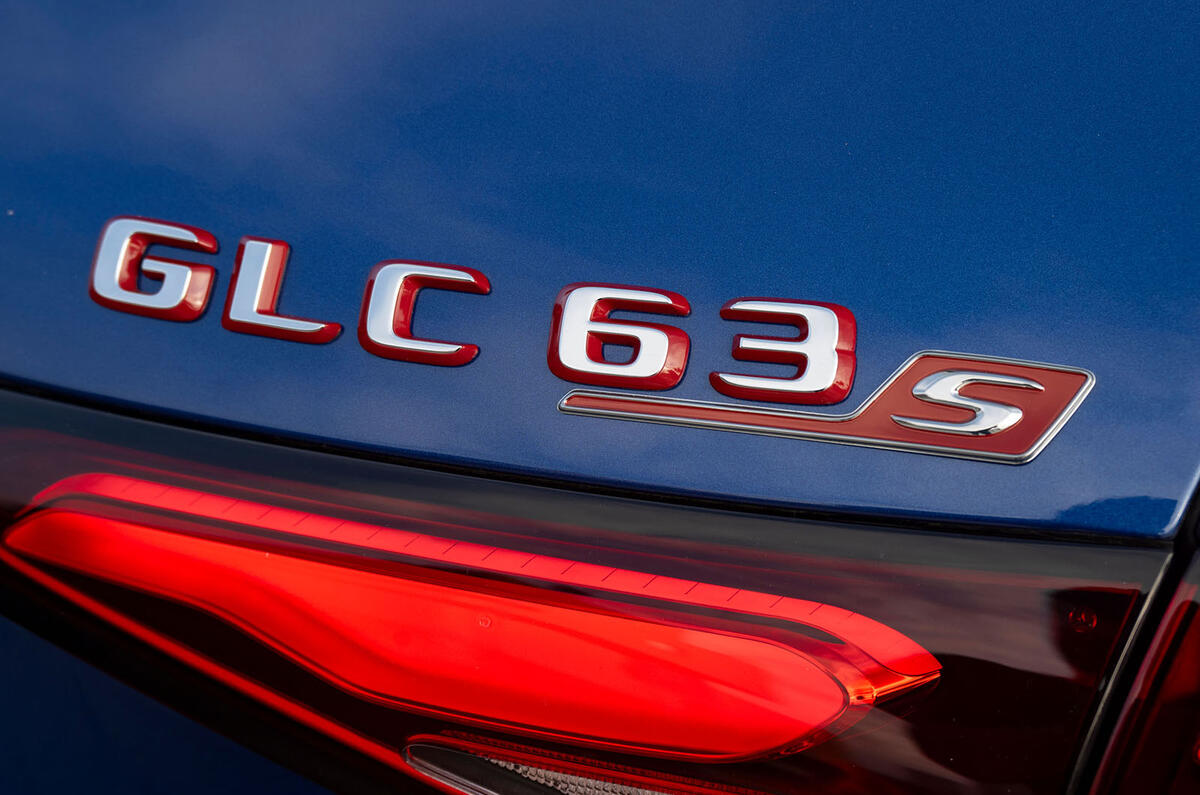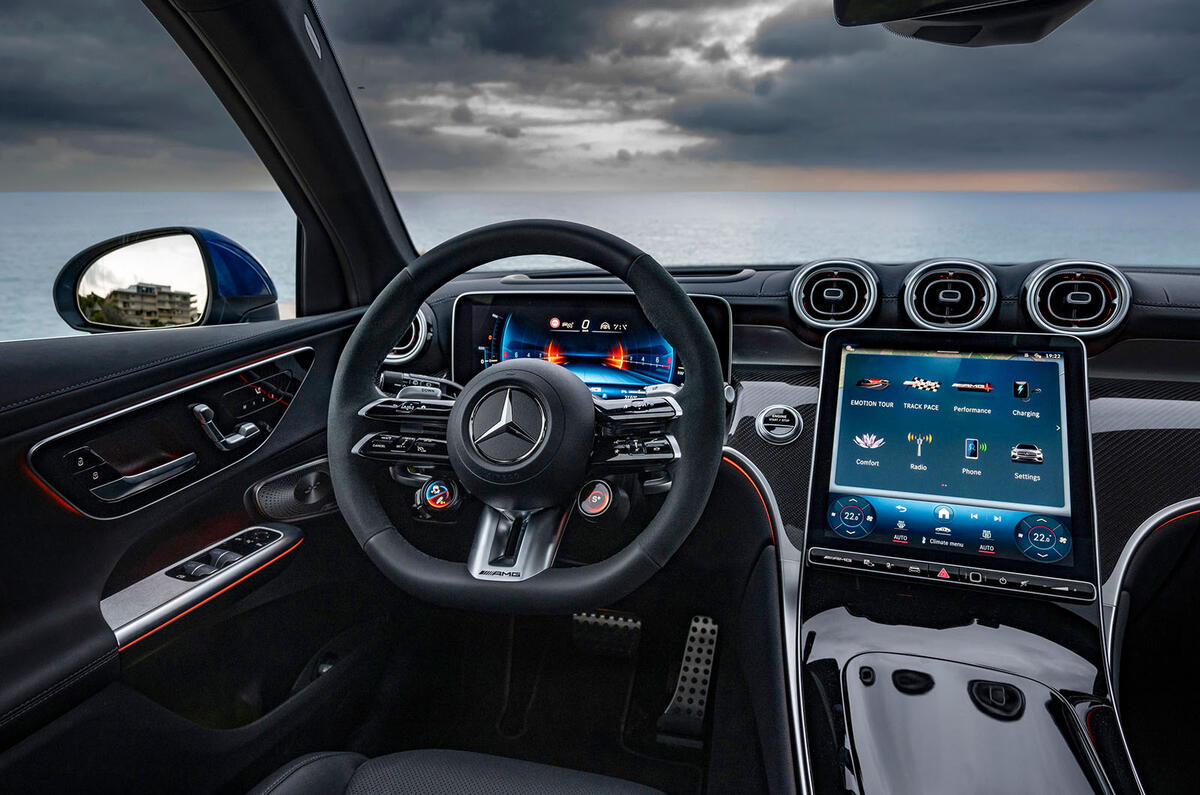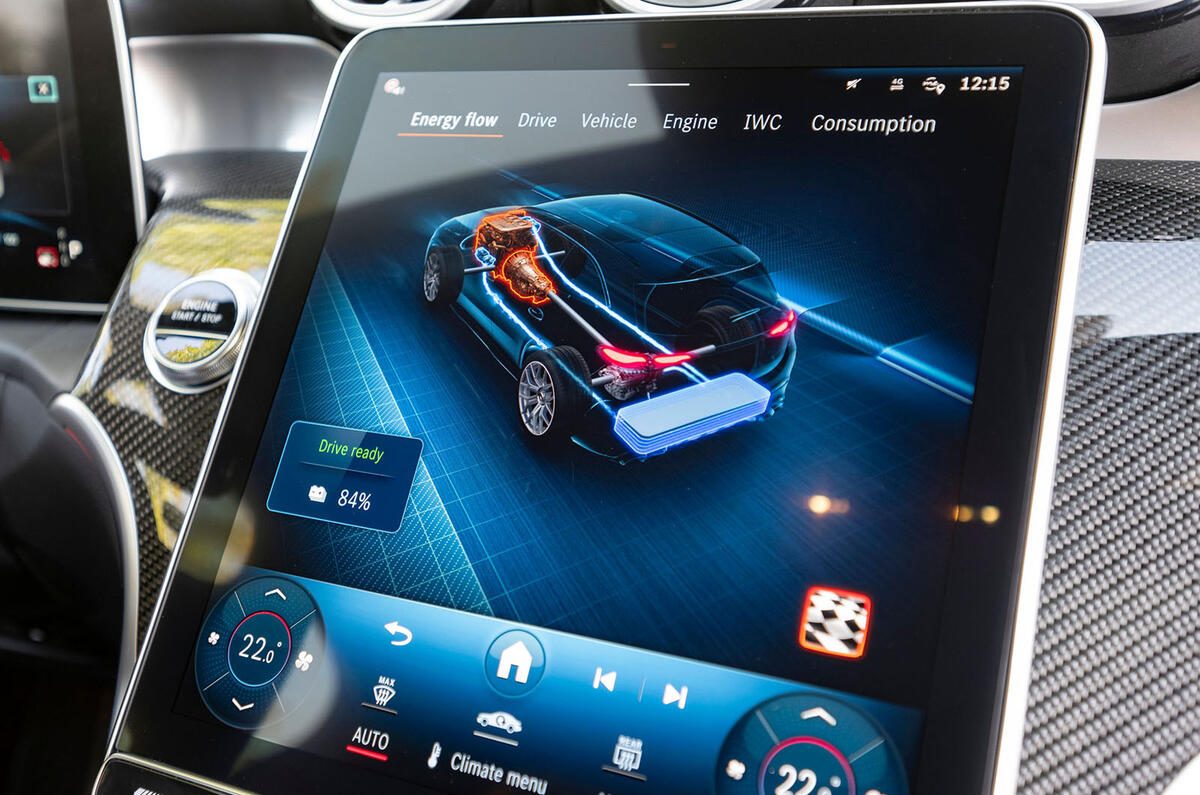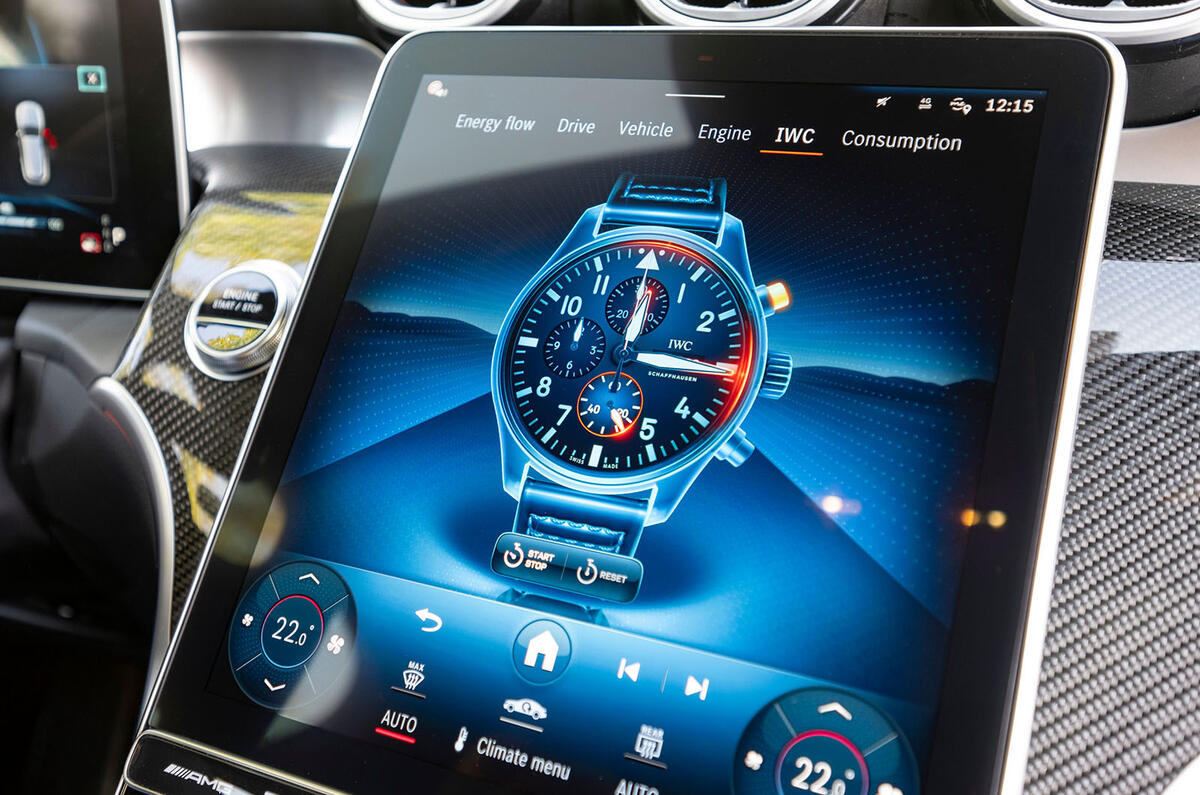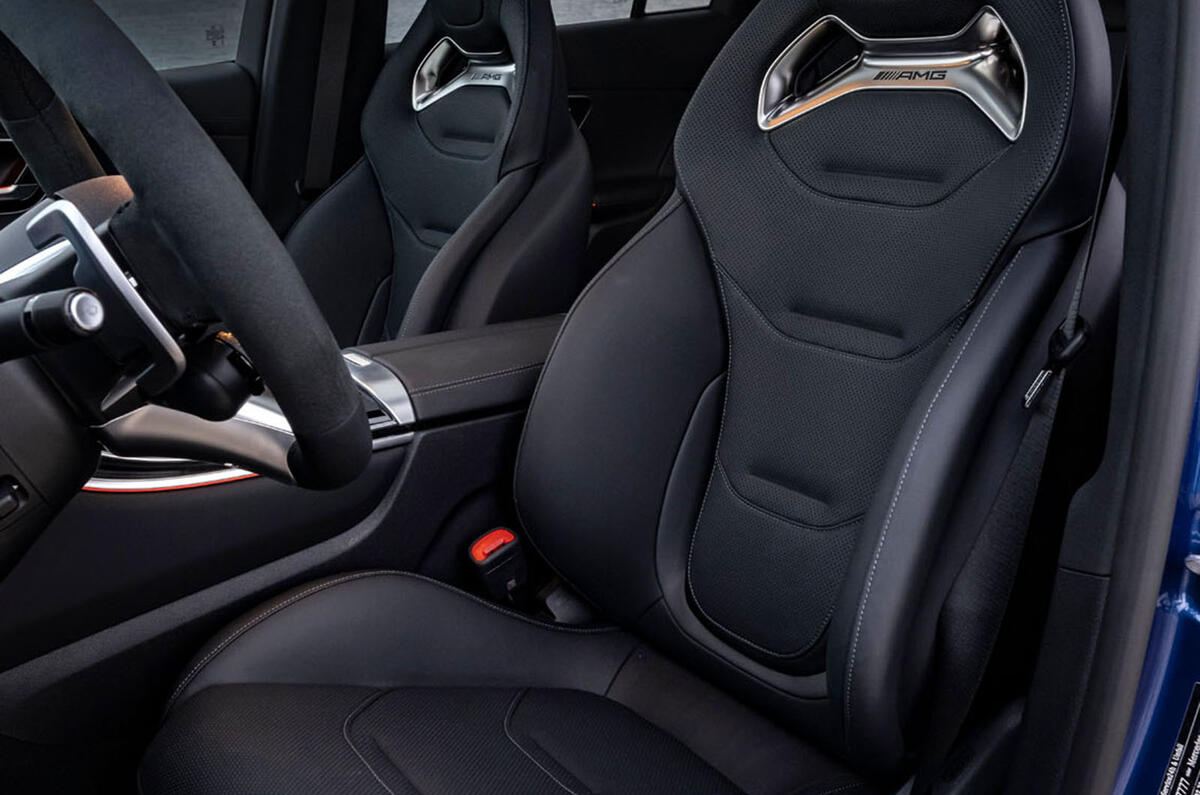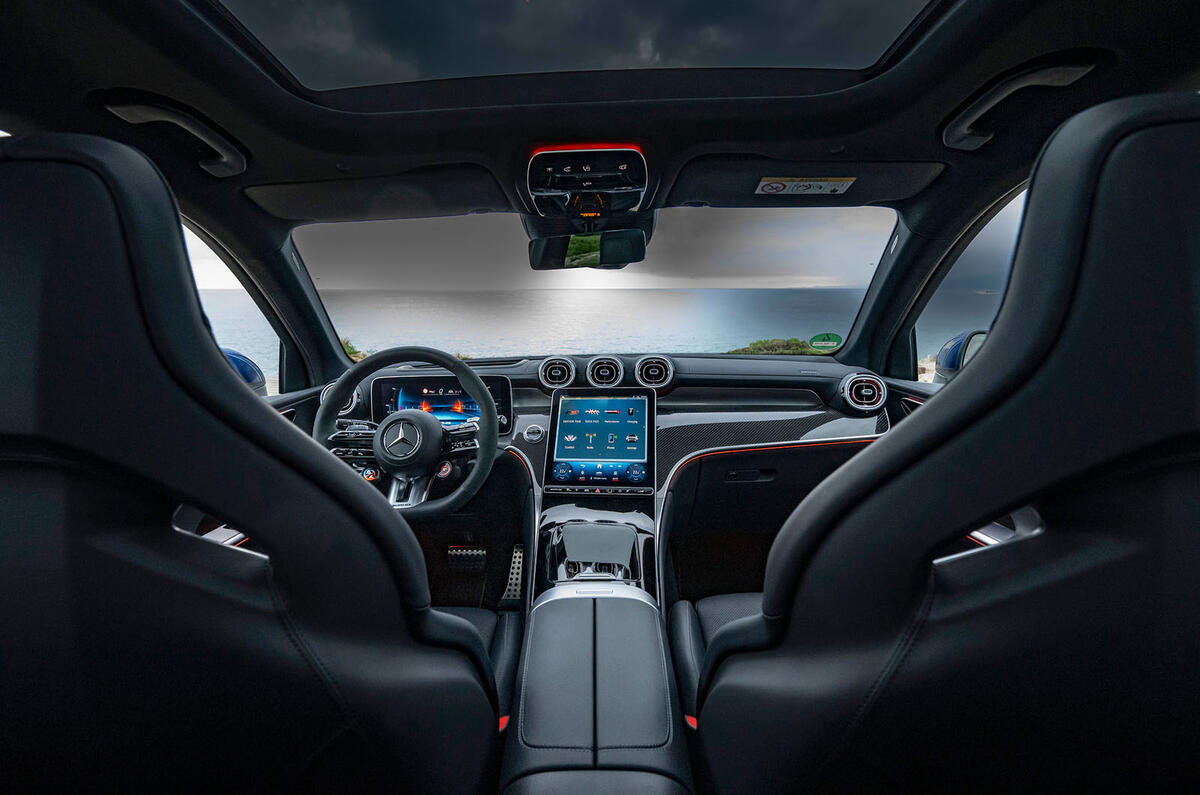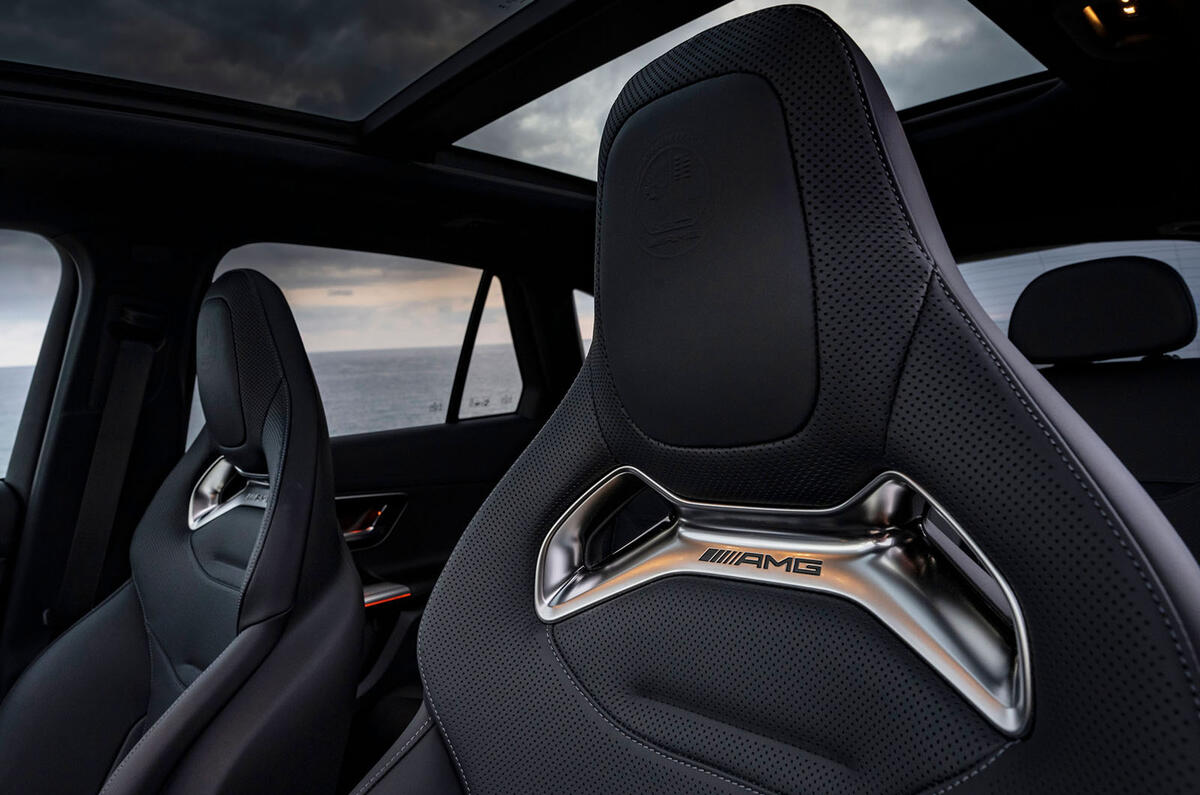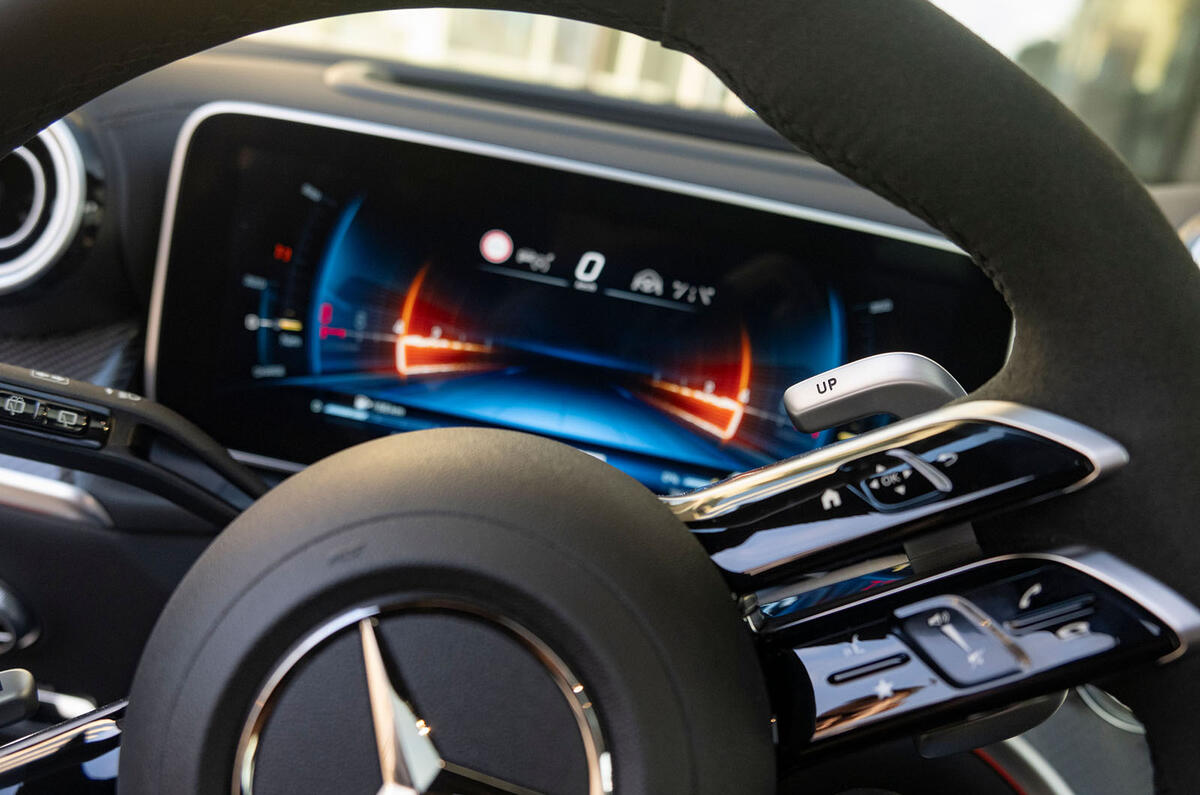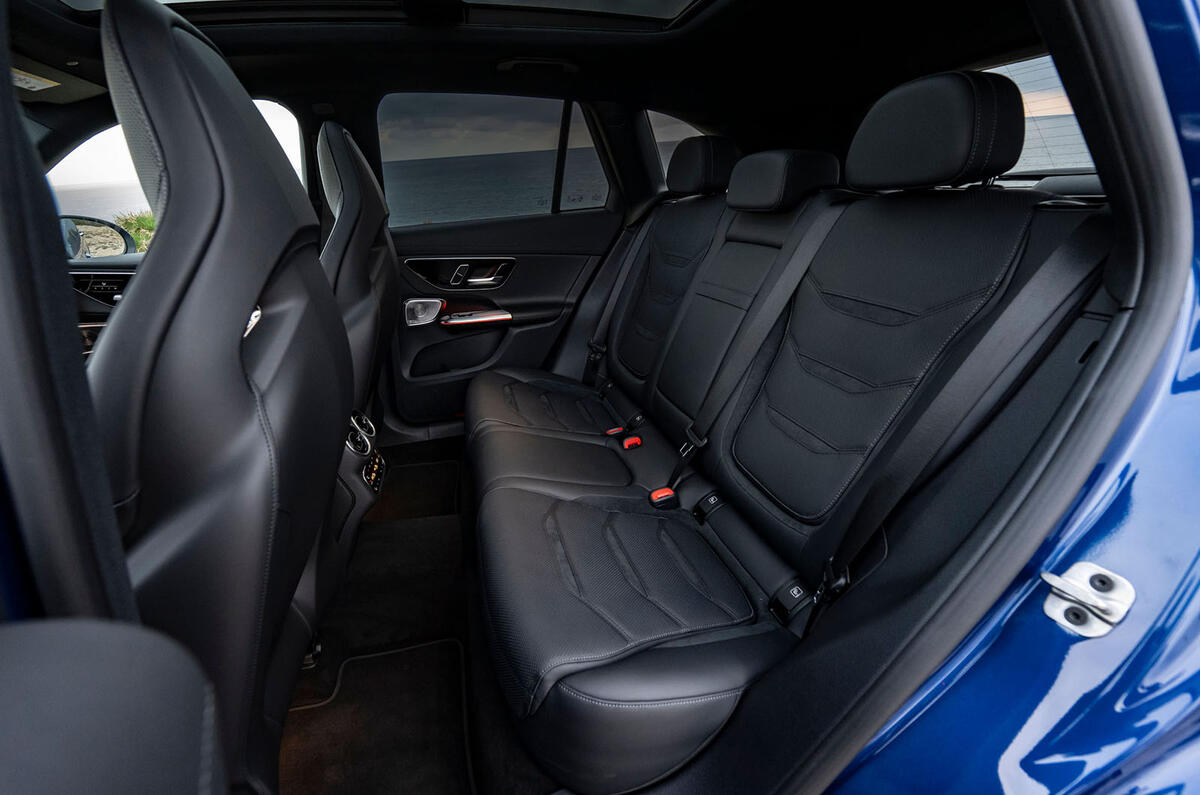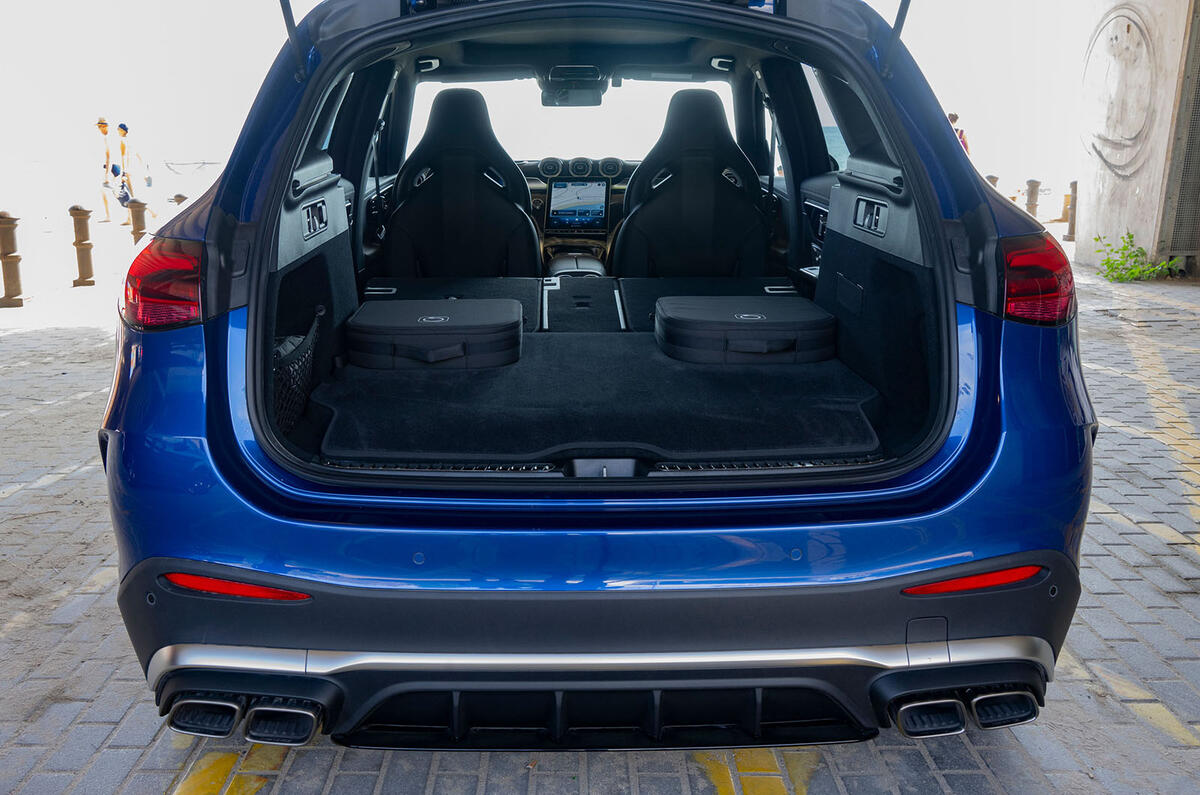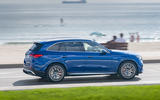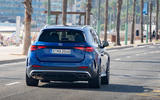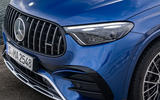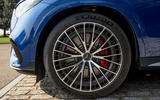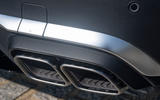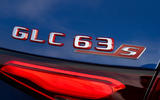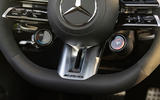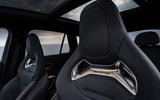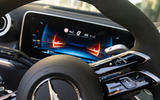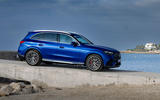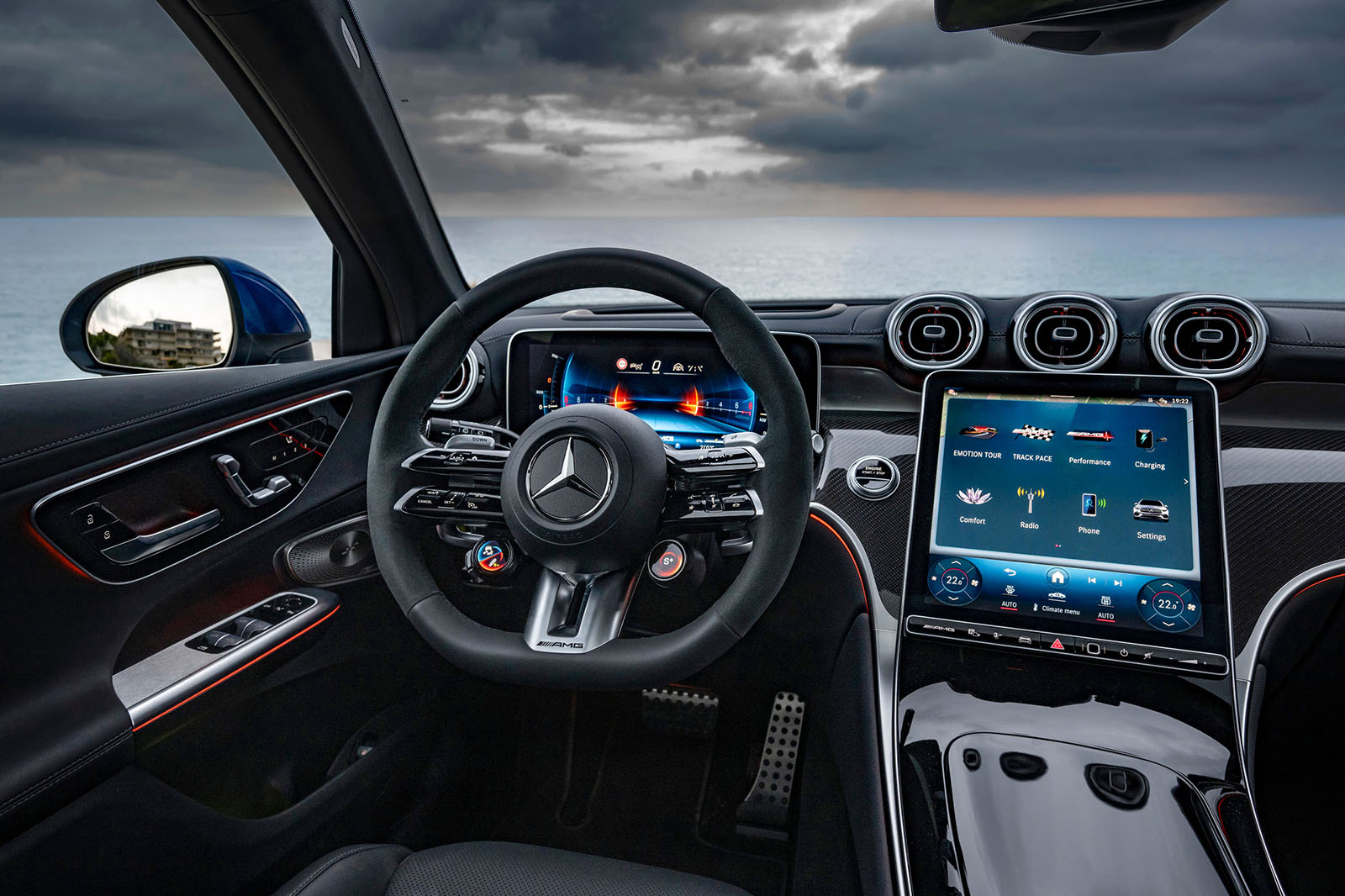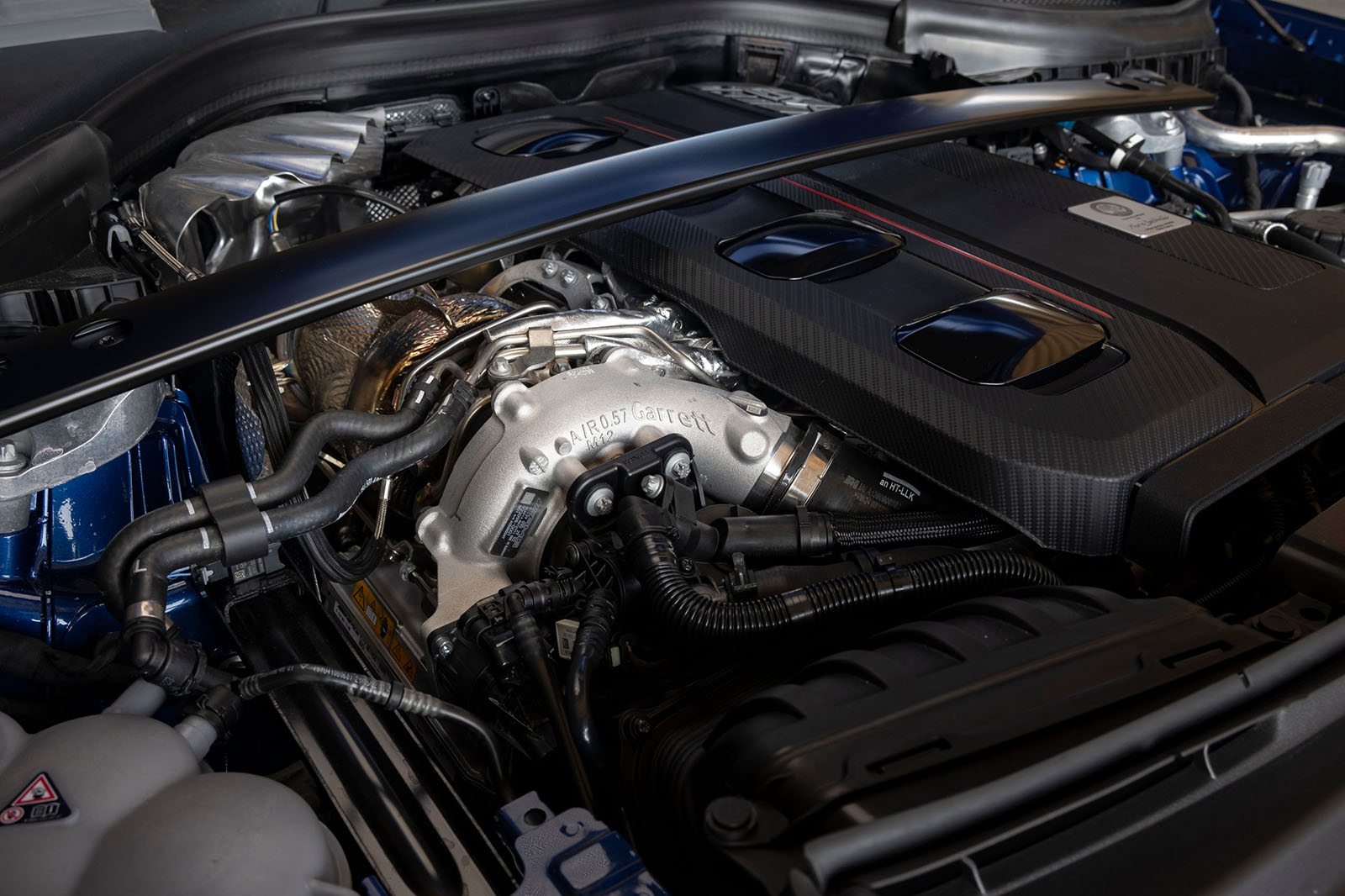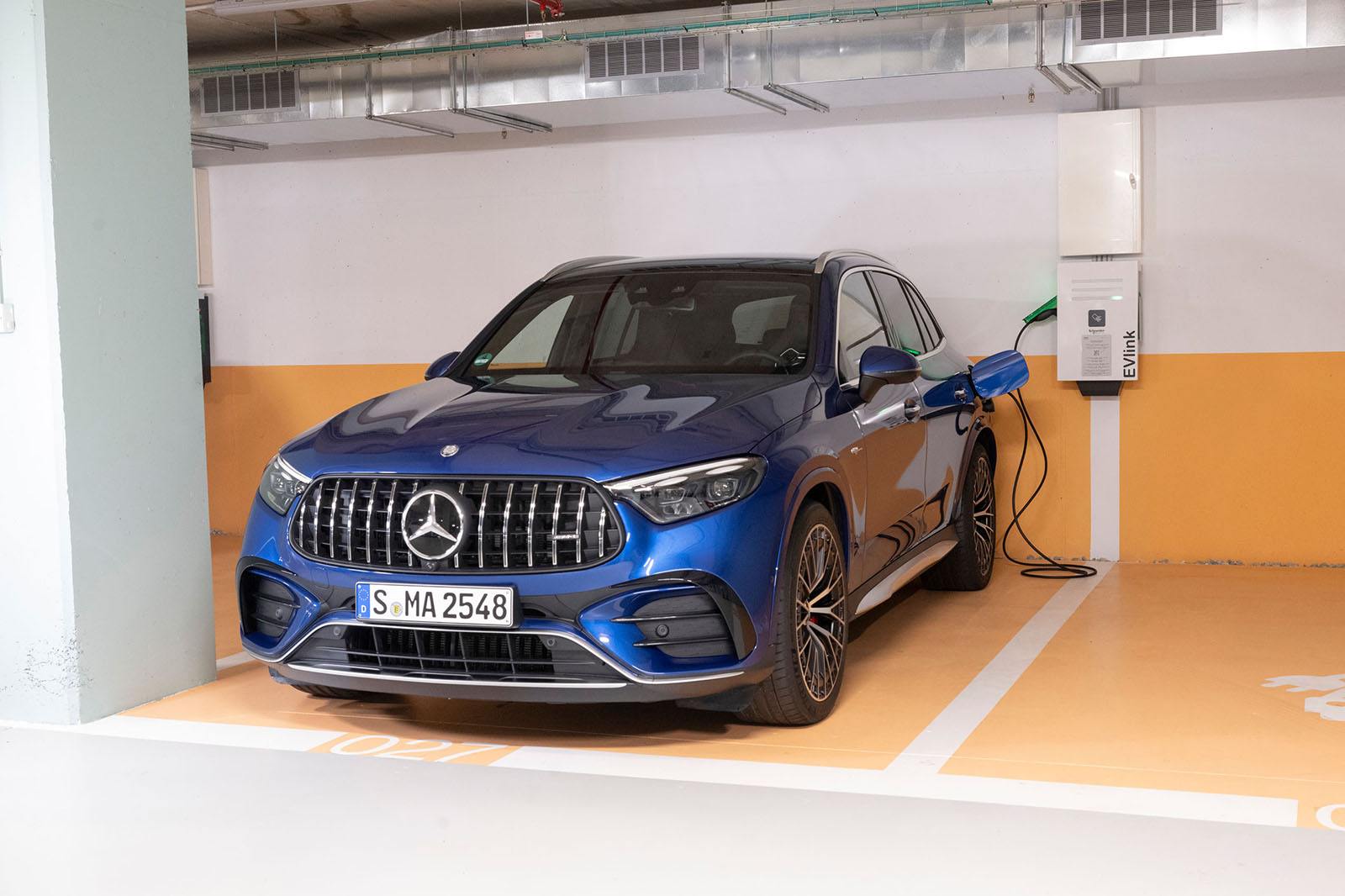Progress is impossible without change, or so they say. For the hottest Mercedes-Benz GLC, this means forgoing its much-loved twin-turbocharged 4.0-litre V8 petrol engine for a mesmerisingly complex plug-in hybrid drivetrain.
Launched in the new Mercedes-AMG C63 S E-Performance earlier this year, this matches an updated version of the A45’s 2.0-litre turbo four-cylinder engine with a rear-mounted 400V electric motor to give the new GLC 63 S E Performance 671bhp and 752lb ft of torque – figures that not only place it at the top of its class but also 69bhp and 236lb ft ahead of the old GLC 63 S.
It’s also a significant 256bhp and 383lb ft more than the new GLC 43, which uses the same M139 engine but in a lower state of tune and with only mild-hybrid electrification.
The inclusion of a 4.8kWh battery – admittedly more for enhancement of performance than efficiency – also allows the GLC 63 to travel for up to 7.5 miles on electricity alone.
It can’t handle DC rapid charging, but a sophisticated energy recuperation system modelled on that used by Mercedes’ Formula 1 racers (with four settings) quickly and effectively charges it on the go.
You can also choose between no fewer than eight driving modes and four stability control settings. Predictably, however, there’s a catch: at 2235kg, the GLC 63 is now 300kg heavier.


